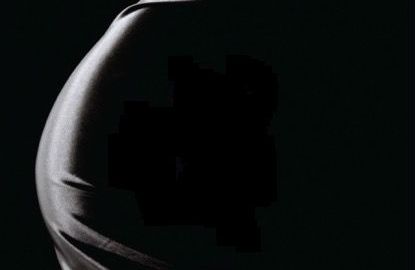BIG THINK FICTION PICK: A Baby to Die For

In the early seventies, when Roe Vs Wade was appealing its way toward the United States Supreme Court, the number of families wanting to adopt a baby – ideally a Caucasian infant – was exploding. This “perfect storm” gave rise to an extremely profitable business––a black market in babies– a so-called “victimless” crime––but one with plenty of innocent victims . . .
Big Think is pleased to offer our newsletter subscribers this exclusive excerpt from A Baby to Die For, a thrilling new novel from Mike Slosberg, cartoonist and author of The Hitler Error and The August Strangers. Mike is also the creator of the wickedly funny book of haiku about aging, Pimp My Walker.
After reading Slosberg’s gripping page-turner, you will never again view the idealistic process of adoption in quite the same light.
—
From A Baby to Die For, by Mike Slossberg:
“There it is!” Helen cried, like a child seeing Disneyland for the first time. “There’s the bull!”
Sure enough, a faded and storm-battered old outdoor sign appeared through the blowing dust. As Garfield’s directions indicated, it showed a giant, red bull charging through the label of a huge package of Red Bull Chewing Tobacco, complete with painted smoke shooting from each angry nostril.
The advertisement was old and broken and riddled with bullet holes, made no doubt, by locals using the sign for target practice. Ironically, if not for the holes, which vented the wind and sand, the large surface of painted sheet metal would have blown away long ago.
Fifty yards beyond the sign they saw their destination for the first time―an old, weathered gas station―no brand names or advertising posters touting oil or tires, no fuel prices posted. Just a small, broken down, single-story adobe building, with a lone gas pump standing guard a few yards from the front door. A layer of fine sand coated every visible surface of the place, making it as one with the surrounding desert.
Slosberg’s A BABY TO DIE FOR delivers an emotional
gut punch to the reader… — Publisher’s Weekly
As the Mercedes rolled slowly to a stop, an ageless and weathered woman shuffled out of the building, shielding her face from the relentless wind with the tattered sleeve of her cardigan. She, too, appeared devoid of color.
The old lady approached the car and squinted into the window, inspecting Mark and Helen Kaufman. Then she shuffled to the front of the car and with the edge of her long skirt, rubbed at a thick layer of dirt covering the license plate, just enough to read the numbers. She compared them with those on a small scrap of paper she took from her sweater pocket. With a single nod of her head, she indicated satisfaction and released the paper not bothering to watch as it fluttered out of sight like a little
butterfly. She shuffled back to the shack, opened the door, turned, and smiled. Two or three jack-o-lantern-spaced teeth, yellow from age and nicotine, broke the otherwise emptiness of her smile as she beckoned for the Kaufmans to follow.
“Hello,” Helen said as she approached, “I’m Mrs. Kaufman and this is my husband, Dr. Kaufman.”
The old woman shrugged, saying, “Yo no hablo Ingles,” in a rasping, smoker’s voice.
Inside, the shack was clean, neat, and pleasantly warm. An old army cot sat in one corner covered with a patchwork quilt, faded with age but spotless. An iron stove burned a fragrant smelling wood and on top of the stove a large metal coffeepot was warming. The rich aroma of strong coffee filled the tiny room. A brand new chrome payphone on the wall looked ridiculously out of place. A door next to the phone was partially open and revealed a tiny bathroom with a shower.
The old woman pointed to the opposite side of the room and smiled. There, against the wall stood an old Coca-Cola cooler, its top ajar. Most of the red painted finish had long ago faded, chipped, and peeled from its sides. In the summer, when the cooler was used to keep soda chilled, it stood outside the shack next to the gas pump. Now, washed clean, it was serving quite another purpose.
What Upton Sinclair did for the meat slaughtering industry in his novel, THE JUNGLE, and Harriet Beecher Stowe did to indict slavery in UNCLE TOM’S CABIN…A BABY TO DIE FOR takes on the horrors of the black market adoption racket
— Warren Adler: Author, The War of the Roses
Mark and Helen, confused at first, stared at the beat- up old cooler. Helen was the first to move, slowly walking to the cooler. Her hand reached out, haltingly, as if she might burn her fingers on the faded red lid. She lifted the top to its full open position so it rested back against the wall, then she reached down, bending from the waist, both arms going down and disappearing deep inside the cooler. When they came up again, they were filled with a soft, pink blanket. Two little arms, covered in tiny, clean, jersey sleeves waved in circles and ovals, and the gurgles of an awaking infant filled the shack. Mark leaned over to see the baby cradled in Helen’s arms, but he couldn’t see very well, as tears blurred his vision.
Helen cooed, “Hello, Amy. Amy Kaufman. Oh, my God, Mark, she’s beautiful!” Helen said, her own tears streaming down her face.
Right now and for all time, the money they had spent for Amy suddenly seemed irrelevant, after all, it was only money and, thank God, they had it. And the baby, their baby, was so beautiful, with huge black eyes, clear skin, and thick blond hair already covering her well-formed head. She was everything they had wanted. She was everything Max Garfield had promised―maybe more.
Mark finally tore himself away from looking at the baby, and removed a thick package from inside Helen’s shoulder bag and presented it to the old woman. With arthritic hands, she tore open the sealed package and removed the bills―$40,000 in the form of four hundred slightly used hundred-dollar bills―the final payment for their baby.
—
Enjoyed the excerpt? A Baby to Die For is available at Amazon, Barnes and Noble, and Apple’s iBookstore.





